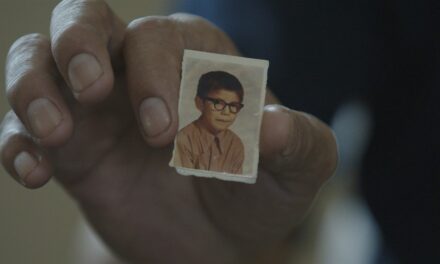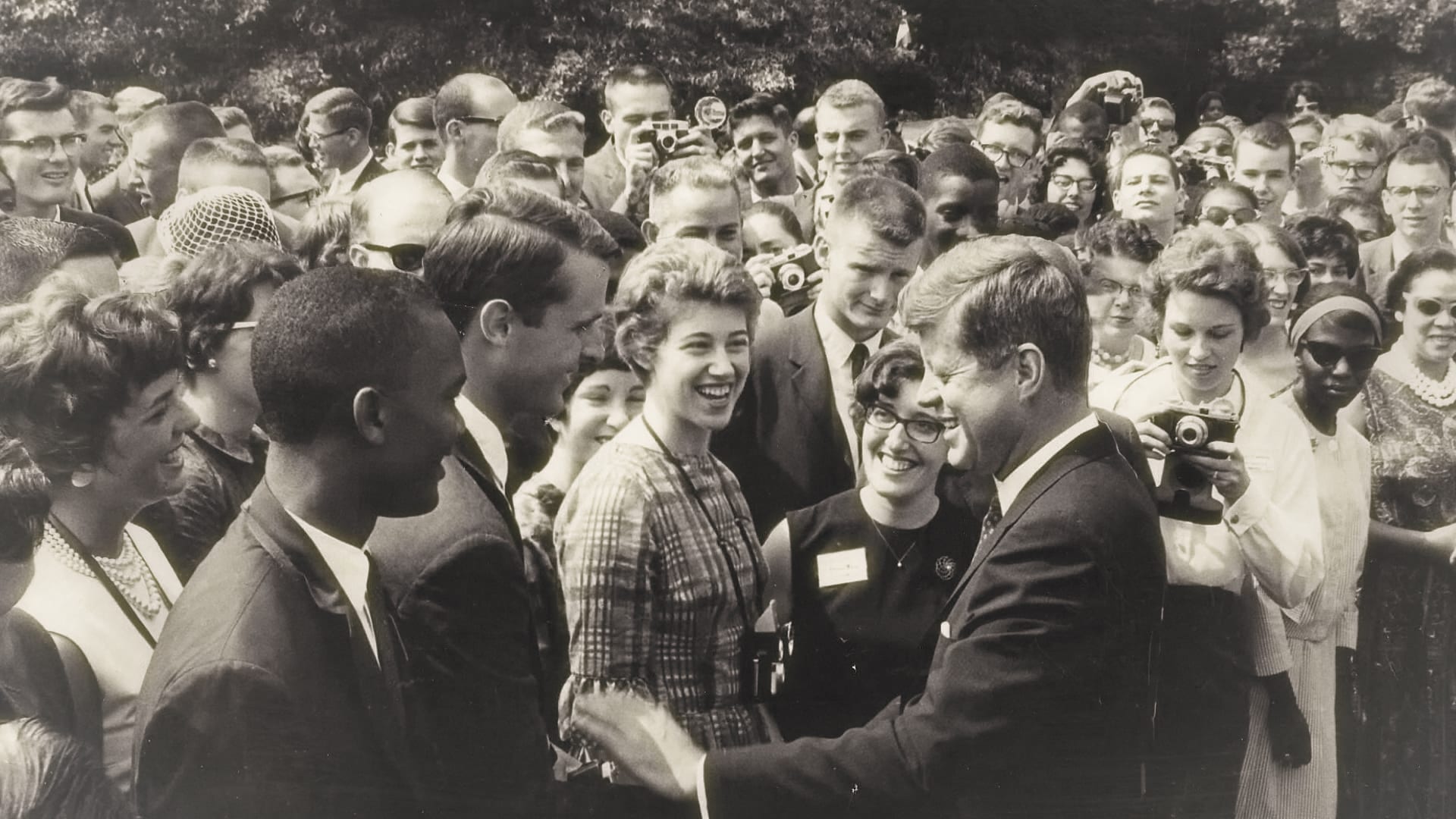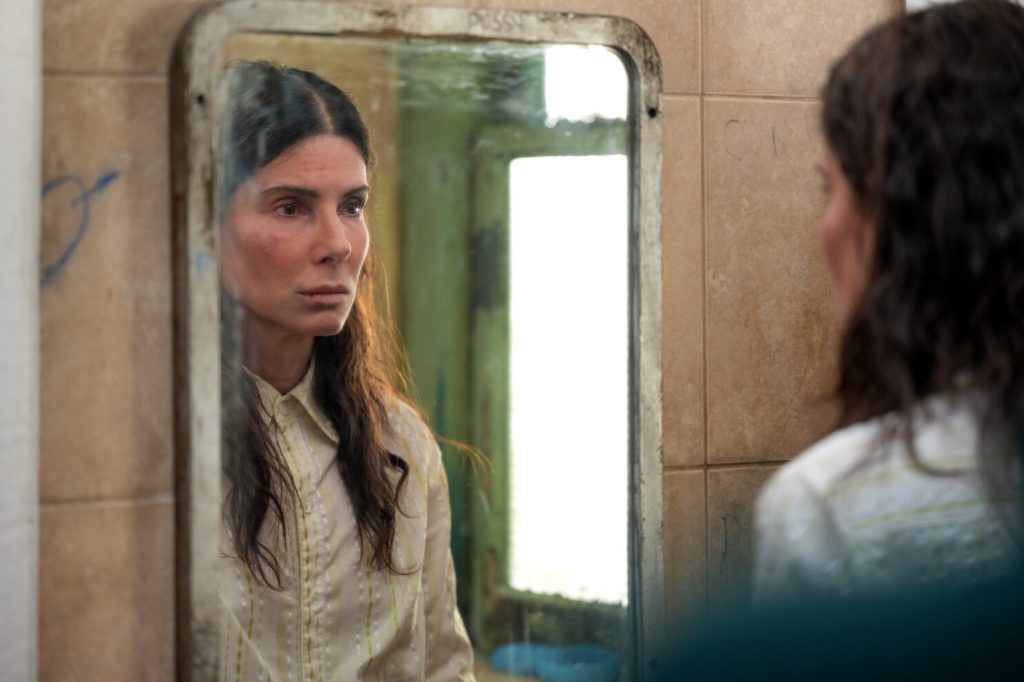
In Netflix’s The Unforgivable, Sandra Bullock plays Ruth Slater, who went to prison for twenty years for murder and now slowly works to rebuild her life. Using Sally Wainwright’s British series Unforgiven as a road map, director Nora Fingscheidt sets the audience up for a series of shocking, emotional twists and turns, all while asking the question: can a person really be forgiven if they’ve done something evil?
When the audience is introduced to Slater, she’s gathering her few belongings, checking out of prison for good behavior and checking into a halfway house. She’s not played by the Bullock we remember, all whip-smart and verbally rambunctious, but rather a quiet, beaten, morose woman who has learned in prison that she has to fight for every scrap of respect, every moment of existence. Released from prison, she gets a job as a fishmonger because she has to, and gains a job working for a Native American building a shelter for the homeless because it’s what she’s gifted doing.

That element of choice – that a woman fresh out of prison and a recovering addict – runs deep through the film. Just because the law considers Slater rehabilitated, doesn’t mean anyone else has to. Certainly not the dead man’s sons, or the people who turn Slater down for jobs when they find out what she’s done. And definitely not those who now care for Slater’s younger sister and refuse to let her back into her sister’s life.
Powerfully told, weaving the three elements of released prisoner, vengeful sons, and troubled younger sister, The Unforgivable smells like the Oscars. Like Charlize Theron in Monster, Bullock shows us varying sides of Slater, some more sympathetic than others. Like Netflix’s 2018 Monster (same name but different), what the audience thinks it knows is wrong, almost entirely until the end.
Critics are panning the film (33% on Rotten Tomatoes) but I’m honestly not sure what they spent two hours watching. Bullock is a quiet, slow burn, captivating in each scene, pent-up until the moment when she finally bursts into flame. Vincent D’Onofrio and Viola Davis are fantastic as John and Liz Ingram, who’ve bought the house where the killing took place; Jon Bernthal shows up as Blake, a co-worker at the fish slaughtering factory that serves as a microcosm of Slater’s post-prison life as an ex-con.
The points couldn’t be much stronger about redemption and grace, crime and punishment, justice and the court of public opinion. This film is so on-the-nose for present-day America, and it feels like a necessary exercise in what it means to be human, or to even consider the purpose of humanity. As people of faith, we promote forgiveness – rather, we talk about it all of the time. But do we really believe in it? Do we believe people can change? Do we believe that we can change?
If we claim to follow Jesus – and we’re told that to be forgiven we have to forgive others – then we have to do better than nearly all of “good society” does in this film. Sadly, we fail to forgive people for much less than what Slater is imprisoned for, and in the process, dishonor the love that calls us to a life of sacrificial love and eternal life in heaven.
For a deeper look – with spoilers – Keep reading!
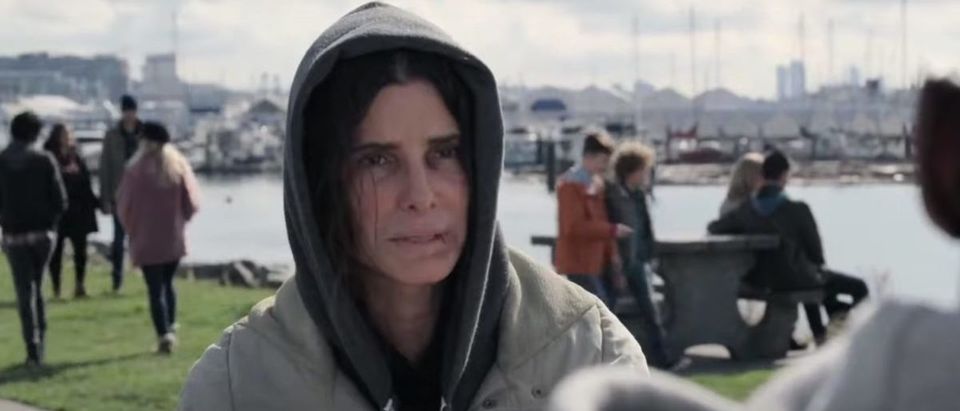
Slater appears to be wound a bit tight in the flashbacks we see, through her perspective and her sister’s, even before the murder. But the actions that happen are indicative of the hurt she’s experienced: her father committed suicide and there’s a gang of unruly furniture movers who seem entirely too eager to bust in on a single woman and the little girl she’s promised to protect. While the death that leads to all of this is tragic, the more details that float through provide a sense of responsibility – and moral ambiguity in terms of the law considering that most states have a “stand your ground” motif on the books. Is Slater really guilty of murder in her own home? Hard to say once the narrative gets muddy.
The fact that the man killed is a police officer leads to all kinds of other pushback against Slater. Some of the actions that result afterward push the bounds of reasonable society – but our expectations of justice and order, when unfettered, often cause extreme action like the beatdown Slater receives in the fish warehouse. Would people stand back and watch a cop killer get torn apart? It seems possible, but one would hope unlikely.
But the other jump is that the dead officer’s two sons would contemplate retribution against Slater. What is initially proposed by the older brother gets twisted within the younger brother, half because in an encounter where he approaches Slater, she says, “Life goes on,” and half because his older brother is sleeping with his wife. While the first one borders on “Martha!” as a plot point in Batman vs. Superman, the interaction between the three people, two brothers and a wife/girlfriend seems like a weird redirect.
What seems perfectly normal is the way that Slater doesn’t believe that she’s worthy of grace. Slater initially expects that once she’s out, that she’ll find some modicum of normal, but soon, she realizes that she will never be fully accepted back into society, acknowledging that people aren’t that different from outside prison to inside the walls. Those who offer her grace are few and far between: Blake who is also an ex-con, John who is soft on crime with his sons and with Slater, and Liz, who she connects with as a mother after the truth comes out.
The allegories in the film, visually, kept me looped in even if the plot seemed to amble around for the first half. Slater plants seeds in pots to grow plants on the roof (the one place she seems care-free) of the homeless shelter-to-be. Inside the shelter, she’s building up the structure to support the good work that will one day happen there. When she reaches her breaking point, she’s tearing down her own good work, having seen the futility of her efforts to truly be accepted. Too often, the things we invest in aren’t actually changing our situation – something she discovers in meeting her sister’s adoptive parents – because she’s hung up on transactional redemption rather than relational redemption.
Relational redemption is what wins out in the end. She hangs onto believing in the best of people; she’s willing to intercede on behalf of someone who literally has no voice to speak for themselves. She’s pursuing the soul – the divine spark in each of us – as she aims to make things better for an uncertain future. Ironically, she could’ve walked away, or used the truth that the kidnapped girl is not her daughter, but she doesn’t. She follows through, protectively, because she is the mother figure, the protector – unlike her sister’s adoptive mother who is rendered mute by her own decisions (and the script).

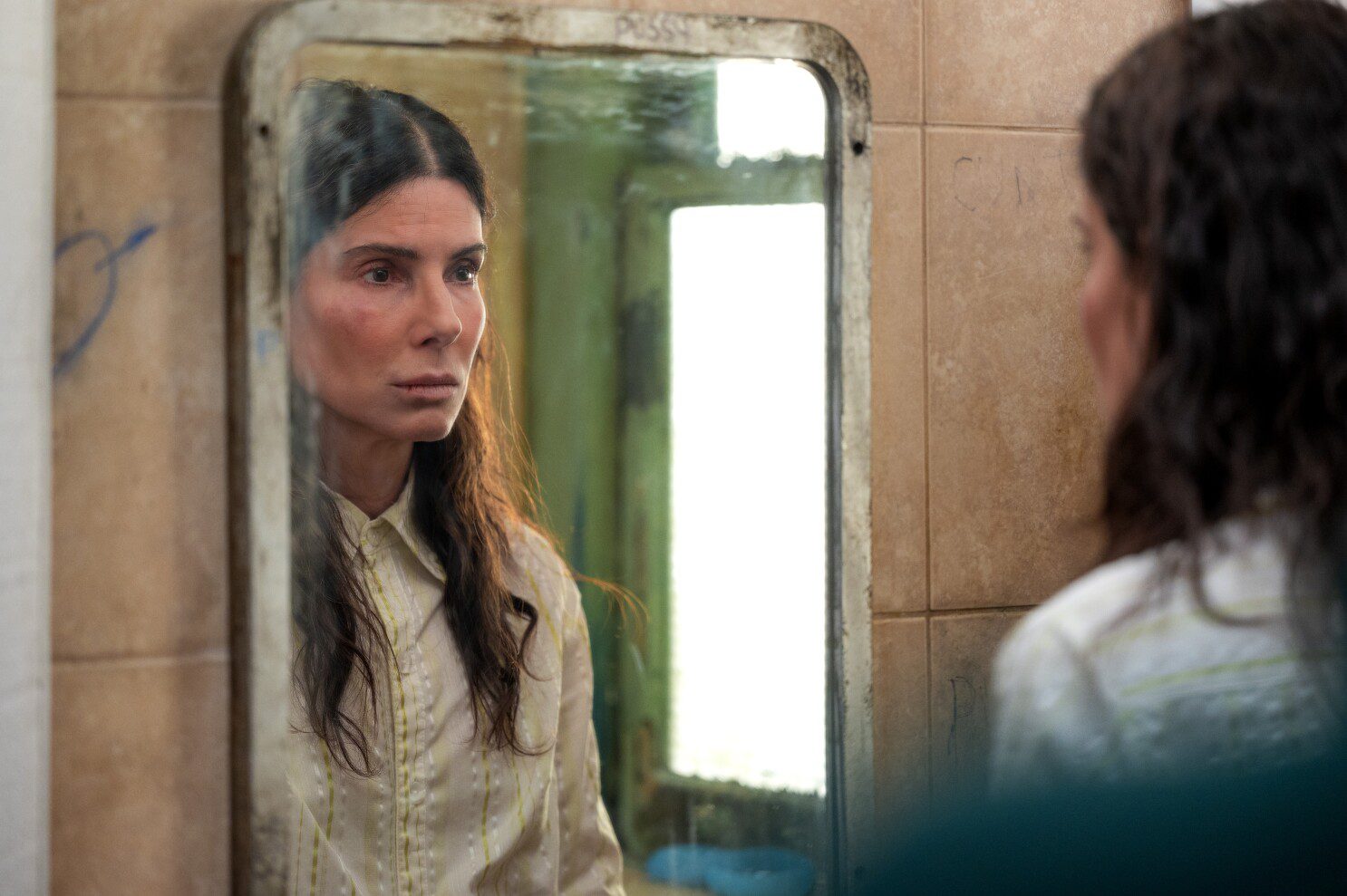
![High Life: [Star] Trek of the Damned](https://screenfish.net/wp-content/uploads/2019/04/HighLife.0.jpg)
